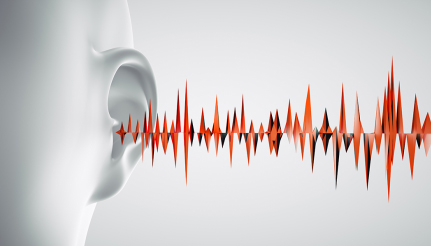
This policy initiates and establishes a hearing conservation program that complies with OSHA 29 CFR 1910.95 to protect Yaskawa America, Inc. associates from the effects of occupational noise exposure.
The Hearing Conservation Amendment to the OSHA Occupational noise exposure standard, 29 CFR 1910.95, requires that employers establish a hearing conservation program for employees whose noise exposures equal or exceed an 8-hour time-weighted average (TWA) of 85 dBA.
This policy establishes a Hearing Conservation Program (HCP) for Yaskawa associates who are assigned to duties where noise exposures are anticipated to be at or above 85 decibels (dBA) as an 8-hour time-weighted average (TWA).
Yaskawa work areas that are at or exceed 85 dBA TWA:
Whenever feasible, Yaskawa associates are encouraged to avoid exposure to hazards, including noise.
Yaskawa associates subject to this policy are to limit their exposure to noise to the minimum duration necessary, and to wear hearing protection as required for the safe completion of their duties.
The success of this hearing conservation program depends on an accurate knowledge of the existing noise environment.
Accurate surveys define areas within acceptable guidelines for noise exposure and those areas where potentially harmful noise exposure exists.
At this time, no Yaskawa work areas have been identified (exposure to at or above an 8 hour time weighted average of 85 decibels or greater) to trigger this monitoring program. This is re-evaluated annually.
Associate Monitoring will occur when Yaskawa's Hearing Conservation Program is triggered. At this time, no associate monitoring is warranted.
The requirements in this section apply when Associate Monitoring is warranted.
Within 6 months of an employee's first exposure at or above the action level, this company will establish a valid baseline audiogram against which subsequent audiograms can be compared.
At least annually after obtaining the baseline audiogram, the Yaskawa shall obtain a new audiogram for each associate exposed at or above an 8 hour time weighted average of 85 decibels
Each associate's annual audiogram should be compared to her/his baseline audiogram to determine if the audiogram is valid and if a standard threshold shift has occurred. This comparison may be done by an individual trained to technician level. If the annual audiogram shows that an associate has suffered a standard threshold shift, a retest shall be accomplished within 30 days and the results considered as the annual audiogram.
Yaskawa shall ensure that an audiologist, otolaryngologist, or physician review problem audiograms (those where the test results and expectations are vastly different indicating testing irregularity or a significant threshold shift has occurred) and determine whether there is a need for further evaluation.
If a comparison of the annual audiogram to the baseline audiogram indicates a standard threshold shift has occurred, the employee shall be informed of this fact in writing, within 21 days of the determination.
A standard threshold shift is a change in hearing threshold relative to the baseline audiogram of an average of 10 dB or more at 2000, 3000, and 4000 Hz in either ear.
In determining whether a standard threshold shift has occurred, allowance may be made for the contribution of aging (presbycusis) to the change in hearing level by correcting the annual audiogram according to the procedure described in Appendix F, 29 CFR 1910.95
Unless a physician determines that the standard threshold shift is not work related or aggravated by occupational noise exposure, the employer shall ensure that the following steps are taken when a standard threshold shift occurs:
An annual audiogram may be substituted for the baseline audiogram when, in the judgment of the audiologist, otolaryngologist or physician who is evaluating the audiogram determine that:
Audiometric tests conducted shall be pure tone, air conduction, hearing threshold examinations, with test frequencies including as a minimum 500, 1000, 2000, 3000, 4000, and 6000 Hz.
Tests at each frequency will be taken separately for each ear in accordance with 1910.95 ((h) Audiometric test requirements).
This section applies to all Yaskawa Facilities and all Yaskawa associates, whether or not the Hearing Conservation Program is triggered.
Yaskawa provides hearing protection at no cost to:
| Permissible Noise Exposures | |
|---|---|
| Duration per day, hours | Sound level dBA slow response |
| 8 | 90 |
| 6 | 92 |
| 4 | 95 |
| 3 | 97 |
| 2 | 100 |
| 1 ½ | 102 |
| 1 | 105 |
| ½ | 110 |
| ¼ or less | 115 |
Elementary noise measurements taken with a smartphone application are recorded in the Job Hazard Assessment. (Where elementary measurement exceeds 83 dB, a calibrated measurement is taken and recorded on the Noise Measurement Log maintained by the EHS Department.)
Noise Measurement Log, maintained by EHS Department
Audiometric Tests are maintained by Human Resources and retained for the duration of the affected associate’s employment plus a minimum of 5 years.
All records cited in this policy are provided upon request to associates, former associates, representatives designated by the individual associate, and representatives of OSHA.
If Yaskawa ceases to do business, the records will be transferred to the successor employer and maintained by the successor employer. Should the company cease to function entirely, the records shall be provided to the respective associates, or as required by law.
Breaching this policy may result in an injury. Breaches of this policy may result in disciplinary action being initiated in accordance with Yaskawa America's discipline policy.
All associates who are exposed to noise at or above an 8-hour time weighted average of 85 dB will participate in Yaskawa’s Hearing Conservation Training Program.
Yaskawa’s Hearing Conservation Training Program informs associates of:
| Rev # | Description | Release Date | Approved by |
|---|---|---|---|
| 0 | Initial Release | 5/11/2016 | Thurwanger |
| 1 | Added use of iPhone for initial sound testing with threshold for when to use a calibrated noise meter | 3/12/2018 | Thurwanger |
| 2 | Added check during annual review that validates there continue to be no areas that exceed 85 dBA TWA | 1/25/2019 | Thurwanger |
| 3 | Added the Audiometric Test Requirements minimum frequencies tested | 6/5/2020 | Thurwanger |
| 4 | Added the steps taken when a standard threshold shift occurs | 3/12/2023 | Thurwanger |
| Review Date | Reviewed by | Changes Required (Yes/No) | Revision # if updated | All work areas remains <85 dBA" |
|---|---|---|---|---|
| 2/15/2017 | Thurwanger | No | ||
| 1/10/2018 | Thurwanger | Yes | 1 | |
| 1/17/2019 | Thurwanger | Yes | 2 | Yes |
| 1/9/2020 | Thurwanger | Yes | 3 | Yes |
| 1/19/2021 | Thurwanger | No | Yes | |
| 1/13/2022 | Thurwanger | No | Yes | |
| 1/26/2023 | Thurwanger | Yes | 4 | Yes |
| 1/11/2024 | Thurwanger | No | Yes | |
| 1/16/2025 | Thurwanger | No | Yes | |
Policy Video
